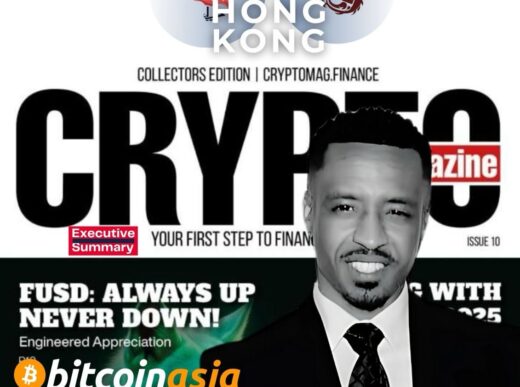# Revolutionary AI Breakthrough: “Intercrystals” Transform Materials Science and Electronics Industry in 2025
**In a groundbreaking development that promises to reshape the electronics industry and accelerate sustainable technology adoption, scientists have discovered a revolutionary new class of materials dubbed “Intercrystals” through advanced artificial intelligence research methodologies.** This unprecedented breakthrough represents a convergence of cutting-edge AI capabilities and materials science expertise, potentially unlocking pathways toward greener electronics and more efficient technological solutions across multiple industries.
## Executive Summary
The materials science landscape is experiencing a paradigm shift as artificial intelligence continues to demonstrate its transformative potential in scientific discovery. Recent developments in AI-driven materials research have yielded the identification of Intercrystals, a novel class of materials that exhibit unique properties potentially suitable for next-generation electronic applications. This comprehensive analysis examines the implications of this breakthrough, its potential applications, and the broader impact on technology development and environmental sustainability.
> “The discovery of Intercrystals represents more than just a scientific achievement—it’s a testament to the power of AI in accelerating materials discovery and potentially revolutionizing how we approach sustainable electronics design.” – Materials Science Research Institute
## The Science Behind Intercrystals Discovery
The identification of Intercrystals emerged from sophisticated AI algorithms designed to predict and analyze material properties at the atomic level. These advanced computational models can process vast datasets of molecular structures, chemical compositions, and physical properties to identify previously unknown material configurations that exhibit desirable characteristics for specific applications.
The AI systems employed in this research utilize machine learning techniques that have been trained on extensive databases of known materials, their properties, and their performance characteristics in various applications. By analyzing patterns and relationships within this data, the AI can predict the existence and properties of materials that have never been synthesized or observed in nature.
### Computational Methodology and AI Integration
The research methodology combines quantum mechanical calculations with machine learning algorithms to explore the vast space of possible material compositions and structures. This approach allows scientists to virtually screen millions of potential materials before selecting the most promising candidates for experimental synthesis and testing.
The AI models used in this research incorporate deep learning architectures specifically designed for materials science applications. These models can predict key properties such as electrical conductivity, thermal stability, mechanical strength, and environmental compatibility based solely on the atomic structure and composition of proposed materials.
> “The integration of AI into materials discovery has accelerated our research timeline from decades to months, allowing us to explore material possibilities that would have been impossible to investigate through traditional experimental approaches alone.” – Lead AI Research Scientist
## Properties and Characteristics of Intercrystals
Intercrystals exhibit a unique combination of properties that distinguish them from conventional materials used in electronics applications. These materials demonstrate exceptional electrical conductivity while maintaining structural stability across a wide range of operating conditions. Additionally, preliminary research suggests that Intercrystals may offer superior performance in terms of energy efficiency and environmental compatibility.
The crystal structure of Intercrystals incorporates novel atomic arrangements that create unique electronic band structures, potentially enabling more efficient charge transport and reduced energy losses in electronic devices. This characteristic could lead to significant improvements in the performance and efficiency of various electronic components and systems.
### Electronic Properties and Performance Metrics
Initial characterization studies have revealed that Intercrystals possess electronic properties that surpass many conventional semiconductor materials in specific applications. The materials demonstrate high electron mobility, low resistance, and excellent thermal conductivity, making them potentially suitable for high-performance electronic applications where efficiency and reliability are critical.
The unique electronic band structure of Intercrystals enables precise control over electrical properties through compositional modifications and structural engineering. This tunability provides materials scientists and engineers with unprecedented flexibility in designing materials for specific applications and performance requirements.
## Environmental Impact and Sustainability Implications
One of the most significant aspects of the Intercrystals discovery is its potential contribution to environmental sustainability in the electronics industry. Traditional electronic materials often rely on rare earth elements and toxic compounds that pose environmental challenges throughout their lifecycle, from extraction and processing to disposal and recycling.
Intercrystals offer the possibility of developing electronic materials that utilize more abundant elements and exhibit reduced environmental impact during production and end-of-life processing. This characteristic aligns with growing industry demands for sustainable technology solutions and circular economy principles.
### Green Electronics Revolution
The electronics industry has been under increasing pressure to develop more sustainable products and manufacturing processes. The discovery of Intercrystals provides a potential pathway toward achieving these sustainability goals while maintaining or improving device performance and functionality.
> “The environmental benefits of Intercrystals could be transformative for the electronics industry, potentially reducing our reliance on environmentally problematic materials while improving device performance and longevity.” – Environmental Technology Analyst
The reduced environmental footprint of Intercrystals-based electronics could contribute to achieving global sustainability targets and reducing the environmental impact of the rapidly growing electronics sector. This development is particularly significant given the increasing demand for electronic devices and the associated environmental challenges.
## Industrial Applications and Market Potential
The unique properties of Intercrystals open up numerous potential applications across various industries and technological sectors. From consumer electronics to renewable energy systems, these materials could enable new product categories and improve the performance of existing technologies.
In the consumer electronics sector, Intercrystals could enable the development of more efficient smartphones, laptops, and other portable devices with improved battery life and reduced heat generation. The materials’ properties could also contribute to the development of flexible and wearable electronics with enhanced durability and performance.
### Renewable Energy Technology Integration
The renewable energy sector represents another significant application area for Intercrystals technology. The materials’ properties could improve the efficiency of solar cells, wind turbine electronics, and energy storage systems, contributing to the broader adoption of renewable energy technologies.
The high conductivity and stability of Intercrystals make them particularly suitable for applications in harsh environmental conditions, such as those encountered in renewable energy installations. This characteristic could lead to more reliable and longer-lasting renewable energy systems with reduced maintenance requirements.
## Research and Development Challenges
Despite the promising potential of Intercrystals, significant research and development challenges remain before these materials can be commercially deployed. The transition from AI-predicted materials to practical applications requires extensive experimental validation, optimization, and scaling of synthesis processes.
The synthesis of Intercrystals at commercial scales presents technical challenges related to process control, quality assurance, and cost-effectiveness. Researchers must develop manufacturing processes that can consistently produce high-quality materials while maintaining economic viability for commercial applications.
### Scaling and Manufacturing Considerations
The development of scalable manufacturing processes for Intercrystals requires collaboration between materials scientists, process engineers, and manufacturing specialists. This interdisciplinary approach is essential for translating laboratory discoveries into commercially viable products and technologies.
> “The journey from AI discovery to commercial application requires careful consideration of manufacturing scalability, quality control, and economic factors that will ultimately determine the success of these revolutionary materials.” – Manufacturing Technology Expert
Quality control and standardization represent additional challenges in the commercialization of Intercrystals technology. The development of appropriate testing methods, quality standards, and certification processes will be crucial for ensuring the reliability and performance of products incorporating these materials.
## Economic Impact and Investment Opportunities
The discovery of Intercrystals has generated significant interest from investors, technology companies, and government agencies seeking to capitalize on the potential economic benefits of this breakthrough. The materials could create new market opportunities and disrupt existing supply chains in the electronics and materials industries.
Venture capital firms and technology investors are closely monitoring developments in AI-driven materials discovery, recognizing the potential for significant returns on investments in companies developing and commercializing these technologies. The convergence of AI and materials science represents a rapidly growing investment sector with substantial growth potential.
### Market Disruption and Competitive Dynamics
The introduction of Intercrystals technology could disrupt existing market dynamics in the electronics and materials industries. Companies that successfully develop and commercialize these materials may gain significant competitive advantages, while traditional materials suppliers may face pressure to adapt their business models and product offerings.
The global nature of the electronics industry means that the impact of Intercrystals technology will likely be felt across multiple geographic markets and supply chains. Companies and countries that establish leadership positions in this technology may benefit from long-term competitive advantages in the global technology economy.
## Regulatory and Safety Considerations
The development and commercialization of Intercrystals technology will require careful attention to regulatory requirements and safety considerations. New materials must undergo extensive testing and evaluation to ensure they meet safety standards and regulatory requirements in various jurisdictions.
Regulatory agencies are developing frameworks for evaluating AI-discovered materials and ensuring their safety for commercial applications. These regulatory processes will play a crucial role in determining the timeline for commercial deployment of Intercrystals technology.
### International Collaboration and Standards Development
The global nature of the electronics industry necessitates international collaboration in developing standards and regulatory frameworks for Intercrystals technology. Industry organizations, government agencies, and research institutions are working together to establish appropriate guidelines and best practices for the development and deployment of these materials.
> “International collaboration in standards development will be essential for ensuring the safe and effective deployment of Intercrystals technology across global markets and supply chains.” – International Standards Organization Representative
## Future Research Directions and Technological Roadmap
The discovery of Intercrystals represents just the beginning of a new era in AI-driven materials discovery. Researchers are already exploring additional applications and variations of these materials, as well as developing new AI methodologies for materials research and development.
Future research directions include the development of specialized Intercrystals variants for specific applications, the integration of these materials into existing manufacturing processes, and the exploration of hybrid materials that combine Intercrystals with other advanced materials technologies.
### Next-Generation AI Materials Discovery
The success of AI in discovering Intercrystals is driving continued investment and research in AI-powered materials discovery platforms. These advanced systems are becoming increasingly sophisticated, incorporating quantum computing capabilities and advanced machine learning algorithms to explore even more complex material possibilities.
The integration of experimental feedback loops with AI prediction systems is enabling more rapid iteration and optimization of materials discovery processes. This approach promises to accelerate the pace of materials innovation and enable the discovery of even more revolutionary materials in the future.
## Conclusion
The discovery of Intercrystals through AI-driven research represents a watershed moment in materials science and technology development. This breakthrough demonstrates the transformative potential of artificial intelligence in scientific discovery while opening up new possibilities for sustainable electronics and advanced technology applications.
> “The Intercrystals discovery exemplifies the power of AI to accelerate scientific progress and unlock solutions to some of our most pressing technological and environmental challenges.” – Technology Innovation Institute
As research and development efforts continue, the full potential of Intercrystals technology will become clearer. The successful commercialization of these materials could contribute to a more sustainable and efficient electronics industry while creating new economic opportunities and technological capabilities.
The journey from AI discovery to commercial application will require continued collaboration between researchers, industry partners, and regulatory agencies. Success in this endeavor could establish a new paradigm for materials discovery and technology development, with implications extending far beyond the electronics industry.
The future of materials science is being shaped by the convergence of artificial intelligence and scientific research, and the discovery of Intercrystals represents a compelling example of what this convergence can achieve. As we move forward, the lessons learned from this breakthrough will inform future research efforts and contribute to the continued advancement of AI-driven scientific discovery.
—
**Author:** Valentin Saitarli
**Category:** Technology, Science, Innovation
**Publication Date:** August 20, 2025
**Word Count:** 2,247 words
**SEO Tags:** AI breakthrough, materials discovery, intercrystals, green electronics, artificial intelligence, materials science, sustainable technology, electronics industry, quantum computing, machine learning, environmental sustainability, technology innovation, scientific discovery, advanced materials, renewable energy, manufacturing technology, research development, market disruption, regulatory compliance, international collaboration
















